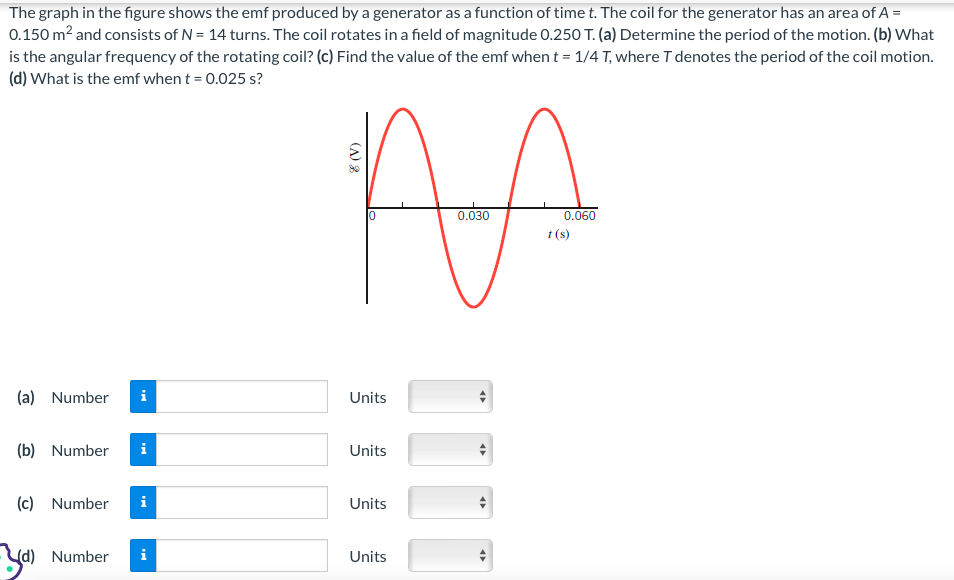The graph in the figure shows the emf produced by a generator as a function of time t. The coil for the generator has an area of A = 0.150 m2 and consists of N = 14 turns. The coil rotates in a field of magnitude 0.250 T. (a) Determine the period of the motion. (b) What is the angular frequency of the rotating coil? (c) Find the value of the emf when t = 1/4 T, where T denotes the period of the coil motion. (d) What is the emf when t = 0.025 s? (a) Number Units (b) Number Units (c) Number Units (d) Number Units
